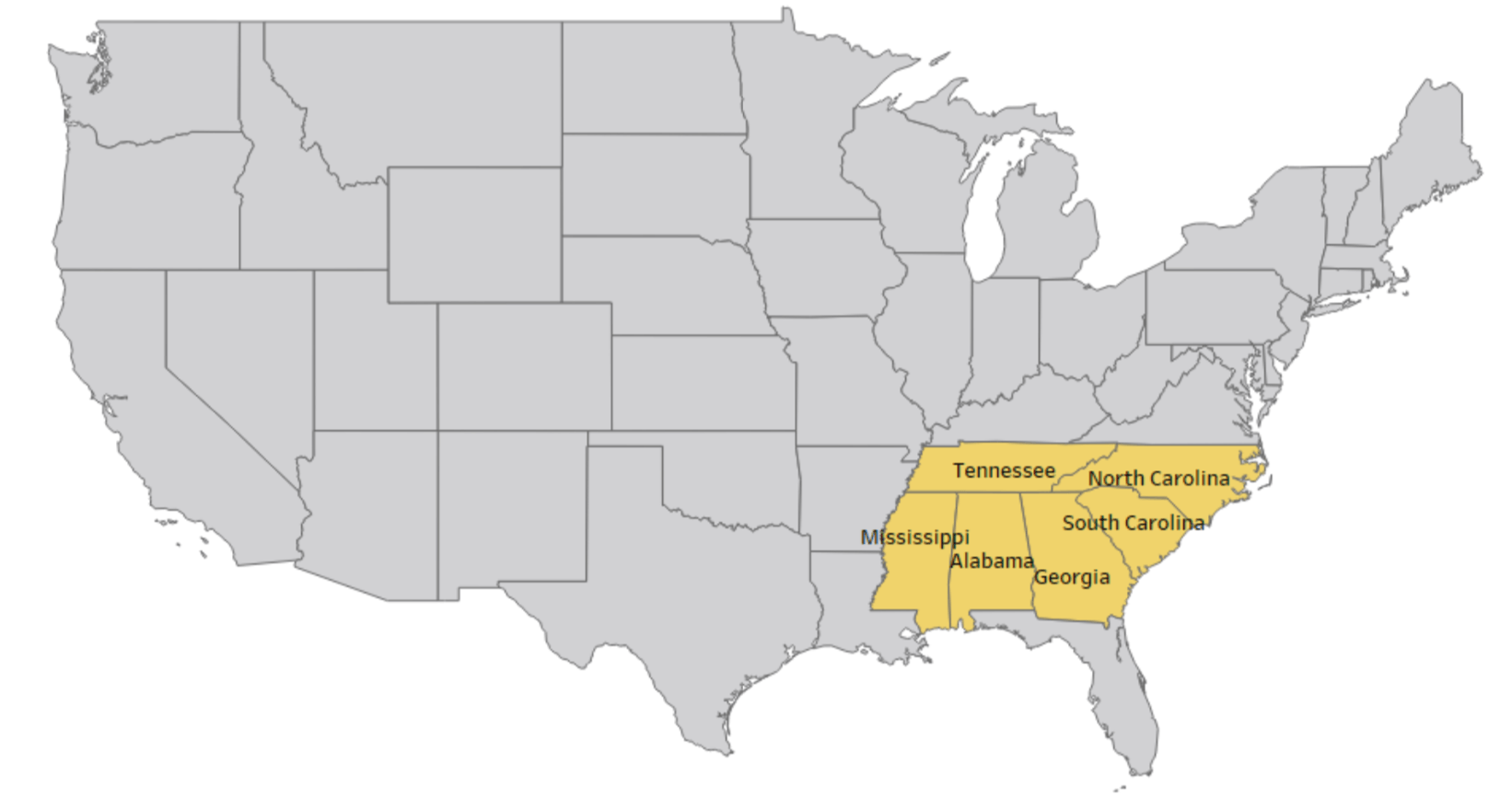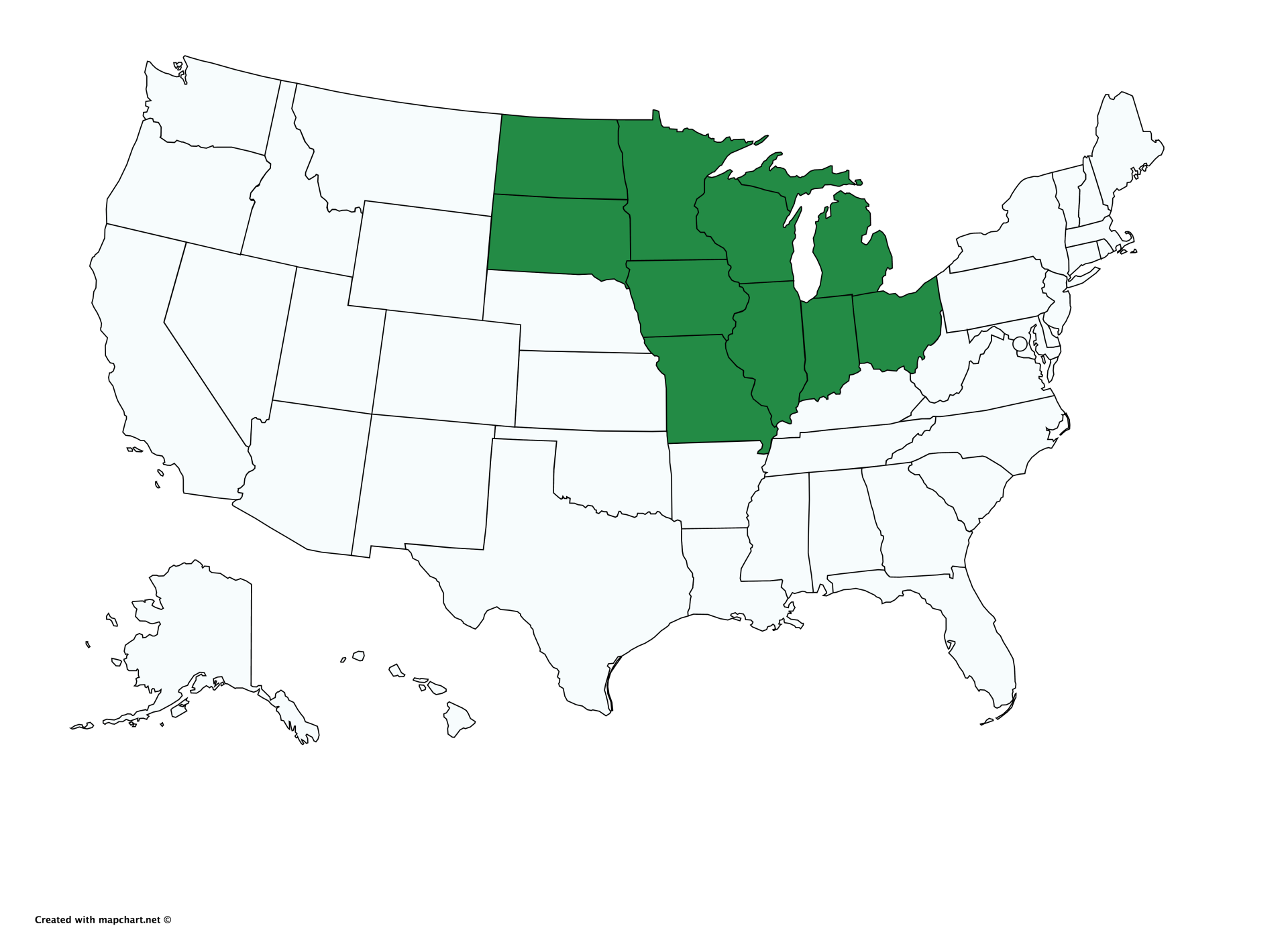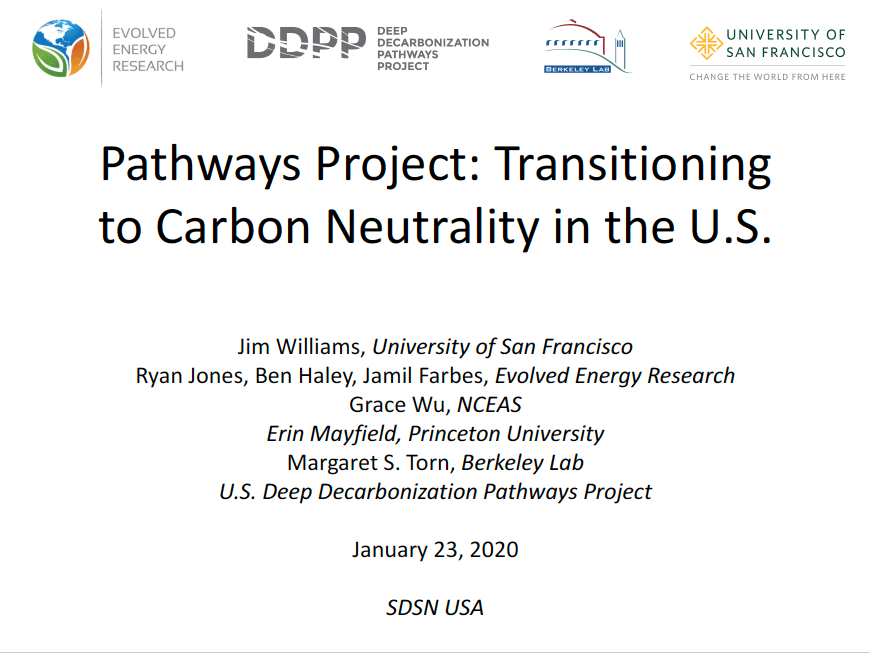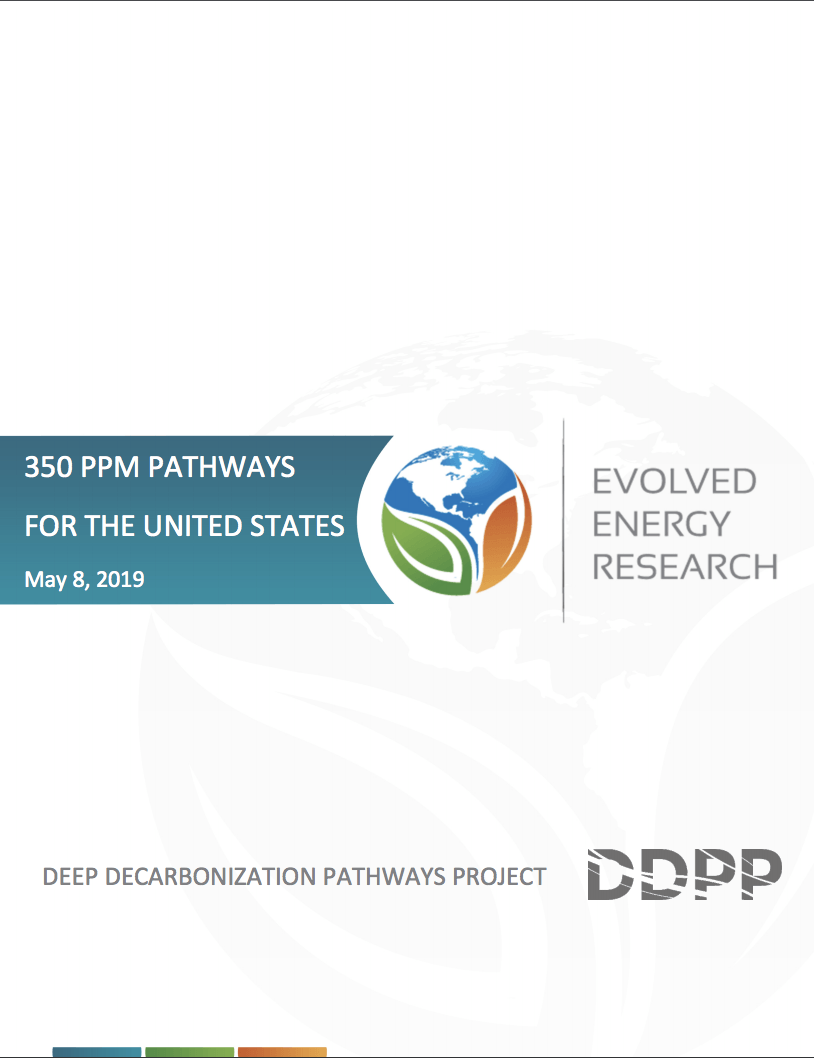America's Zero Carbon Action Plan
America's Zero Carbon Action Plan
Project Overview
The SDSN USA Network was launched in December 2018 with the mission to implement the SDGs in the US by building and mobilizing a national network of academic institutions. The priority on energy and climate work originated during discussions at the SDSN USA launch, in response to a need for an actionable national strategy for a just transition to achieve net zero emissions by 2050.
This project builds on the SDSN Deep Decarbonization Pathways Project, which published its report in 2015 and then a 350 PPM Pathways for the United States report in 2019. The 2019 report describes the changes in the U.S. energy system required to reduce carbon dioxide (CO2) emissions to a level consistent with returning atmospheric concentrations to 350 parts per million (350 ppm) in 2100, achieving net negative CO2 emissions by mid-century, and limiting end-of-century global warming to 1°C above pre-industrial levels. This work inspired the Zero Carbon Action Plan (ZCAP) which launched in early 2020.This plan will serve as roadmap for the U.S. based on the latest modeling, research and understanding of decarbonizing six key sectors (power, transport, industry, buildings, food and land use, and materials) supported by technical pathways to zero carbon by 2050, as well as supporting policy recommendations.
The ZCAP was designed by a cohort of nearly 100 researchers and 19 Chairs who make up the Zero Carbon Consortium , who are experts in their fields of climate change policy across six key sectors: electricity (power) generation; transportation; industry; buildings; sustainable land-use; and sustainable materials management. The report is anchored in the modeling results from Evolved Energy Research (EER) and makes policy recommendations to support the transition of energy infrastructure throughout the country in line with carbon neutrality by mid-century.
This report is available for download and seeks to provide an action plan for comprehensive climate change mitigation to inform federal policy makers, business leaders, and civil society more broadly across jurisdictions.
If you would like to learn more or work with us through a partnership, please get in touch with one of the project managers.
In the days following the ZCAP launch, the Zero Carbon Consortium hosted a series of webinars focused on key chapters and strategic recommendations from the report related to: federal policy recommendations, elements of a just transition, power generation, transportation, food and land-use, materials, buildings, and industry. The full playlist of webinar recordings are available below. You can find individual links to each recording and presentations from the webinars below the playlist.
- Webinar Recordings
- Launch of the ZCAP Report: October 27, 2020 | 1 hour 30 minutes
- Transforming the Power Sector in America's Zero Carbon Action Plan: October 28, 2020 | 1 hour
- Transforming the Transportation Sector in America's Zero Carbon Action Plan: October 29, 2020 | 1 hour 30 minutes
- Transforming the Buildings Sector in America's Zero Carbon Action Plan: November 9, 2020 | 1 hour
- The Just Transition in America's Zero Carbon Action Plan: November 10, 2020 | 1 hour
- Policy & Implementation of America's Zero Carbon Action Plan: November 12, 2020 | 1 hour
- Sustainable Materials Management in America's Zero Carbon Action Plan: November 17, 2020 | 1 hour
- Transforming Industry in America's Zero Carbon Action Plan: November 18, 2020 | 1 hour
- Transforming the Food and Land-Use Sector in America's Zero-Carbon Action Plan: November 24, 2020 | 1 hour
- Webinar Presentations
- Launch of the ZCAP Report: October 27, 2020
- Transforming the Power Sector in America's Zero-Carbon Action Plan: October 28, 2020
- Transforming the Transportation Sector in America's Zero-Carbon Action Plan: October 29, 2020
- Transforming the Buildings Sector in America's Zero Carbon Action Plan: November 9, 2020
- The Just Transition in America's Zero Carbon Action Plan: November 10, 2020
- Policy & Implementation of America's Zero Carbon Action Plan: November 12, 2020
- Sustainable Materials Management in America's Zero Carbon Action Plan: November 17, 2020
- Transforming Industry in America's Zero Carbon Action Plan: November 18, 2020 | 1 hour
- Transforming the Food and Land-Use Sector in America's Zero-Carbon Action Plan: November 24, 2020
Cross-Cutting Working Groups
- Co-Chairs
Jeffrey Sachs,SDSN
David Victor,School of Global Policy and Strategy, UC San Diego
Dan Esty,SDSN USA
Gordon McCord,SDSN USA
- Co-Chairs
Jim Williams,University of San Fransisco
Ryan Jones,Evolved Energy Research
- Co-Chairs
Robert Pollin,UMass Amherst
- Co-Chairs
Michael Gerrard,Sabin Center for Climate Change Law, Columbia Law School
John Dernbach,Widener University Commonwealth Law School
- Co-Chairs
Cynthia Rosenzweig,NASA Goddard Institute for Space Studies
Christian Braneon,NASA Goddard Institute for Space Studies
Sector Working Groups
- Overview
The single most important transformation occurs through the decarbonization of power generation, which accounts for around 32 percent of total CO₂ emissions from energy and industry in 2019. The ZCAP analysis anticipates a major shift to wind and solar energy -- with continued production from other zero-carbon sources, notably nuclear and hydropower. For purposes of maintaining electricity system reliability, a substantial fleet of gas-fired power generators needs to remain in place in 2050, roughly comparable to today’s level of capacity. However, these generators will run much less often than they do at present, comprising only a few percent of total electricity generation.
- Co-Chairs
David Victor,UC San Diego
Morgan Bazilion, Colorado School of Mines
- Overview
The transportation sector includes light-duty vehicles, heavy-duty vehicles (trucks), off-road vehicles, buses, rail, shipping, and aviation. Transportation emissions accounted for 37 percent of total CO₂ emissions from energy and industry in 2019. The principal strategy for decarbonizing transportation is electrification (including battery, plug-in hybrid, and hydrogen fuel cells) of all light-duty vehicles, urban-based trucks and buses, rail, much of long-haul trucking, and some short-haul shipping and aviation. For long-haul aviation and long-haul ocean shipping, advanced low-carbon biofuels and synthetic liquids or gases produced with renewable energy are the leading energy contenders. The second strategy builds on initiatives to reduce vehicle use and miles traveled while enhancing accessibility to health, education, jobs, and other services for the mobility disadvantaged. This transition will require a variety of actions by federal, state, and local governments as spelled out in detail in the report that follows.
- Co-Chairs
Vicki Arroyo,Georgetown Climate Center, Georgetown University Law Center
Dan Sperling,UC Davis
Lewis Fulton,UC Davis
- Overview
Industry accounts for 20 percent of CO₂ emissions from energy. A relatively large share of industry emissions from light industries such as manufacturing of durable goods, food and textile processing, and even mining and non-ferrous metal production may be avoided by coordinated efficiency improvements, electrification, and decarbonization of electricity generation. Other industries – such as iron and steel, cement, and feedstock chemicals – are of particular interest in a decarbonization context precisely because their conventional production processes entail emissions that are difficult to avoid and their capital infrastructure tends to be long-lived. Fortunately, even for these sectors, there are technical solutions available such as carbon capture and storage (CCS) at industrial facilities, hydrogen, supplementary materials and fillers, and other synthetic fuel replacements and substitutions.
- Co-Chairs
Steve Davis,UC Irvine
Chris Bataille,Institute for Sustainable Development and International Relations (IDDRI.org)
- Overview
Buildings, both residential and commercial, account for 12 percent of direct CO₂ emissions. Buildings built between now and 2050 will comprise 30 percent of the building stock in 2050, making low-carbon buildings an essential element of any deep decarbonization strategy. In this regard, the ZCAP proposes a new National Energy Code for Buildings (NECB) to ensure that new buildings constructed after 2025 will not burn fossil fuels onsite, will be highly energy efficient, and will be constructed using low-carbon techniques and materials. The NECB and federal appliance standards should also ensure that replacement equipment and appliances in existing buildings will be energy efficient and largely electrified.
- Co-Chairs
Roger Platt,US Green Building Council
Laurie Kerr, LK POLICY LAB
- Overview
Land use policies impact every aspect of the transition to zero greenhouse emissions, including: siting of renewable energy, next generation biofuels, reforestation, soil carbon, and emissions from agriculture and livestock. The complexity of policy choices in this area will require new efforts at RDD&D, new inter-agency planning, and enhanced cooperation of all levels of government with each other and with impacted communities.
- Co-Chairs
Gordon McCord,SDSN USA
- Overview
The ZCAP calls for a new national framework for Sustainable Materials Management (SMM) and a Circular Economy (CE) based on the pillars of “reduce, reuse, recycle.” Much of the negative climate impact in the United States comes from the materials and food consumed. This includes the entire materials supply chain, from manufacturing, transportation and usage, to final disposition of materials. An integrated SMM and CE approach would help to reduce pollution, drive job creation, spur energy efficiency, and lower GHG emissions. SMM and CE objectives should thus be incorporated into a range of federal policies as well as free-trade agreements and the work of international organizations.
- Co-Chairs
Mark Lichtenstein,SUNY College of Environmental Sciences and Forestry
Supplemental Reading
September 14, 2020
March 12, 2020
January 24, 2020
January 23, 2020
May 8, 2019
Sign Up for SDSN Updates
Get our latest insights, opportunities to engage with our networks, and more.

SDSN mobilizes global scientific and technological expertise to promote practical solutions for sustainable development, including the implementation of the Sustainable Development Goals (SDGs) and the Paris Climate Agreement.
Paris
19 rue Bergère
75009 Paris
France
+33 (0) 1 84 86 06 60
New York
475 Riverside Drive
Suite 530
New York NY 10115 USA
+1 (212) 870-3920
Kuala Lumpur
Sunway University
Sunway City Kuala Lumpur
5 Jalan Universiti
Selangor 47500
Malaysia
+60 (3) 7491-8622






